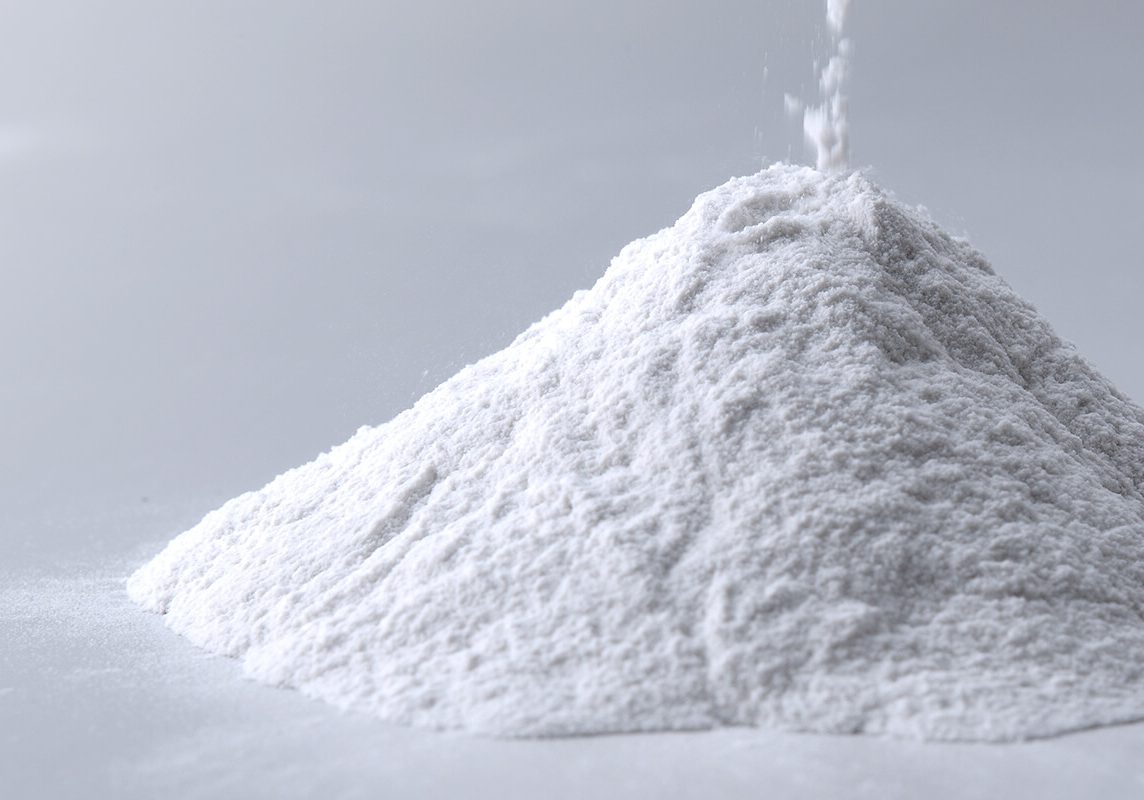Catalytic and carrier properties of non-metallic minerals and energy saving and carbon reduction
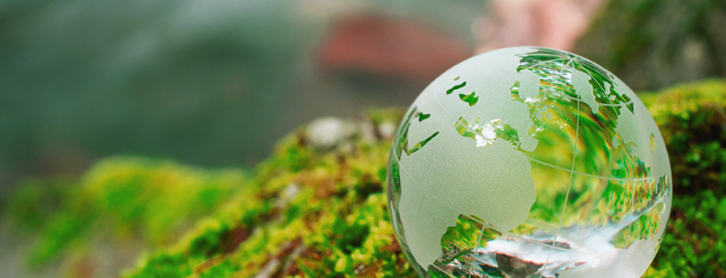
Non-metallic minerals (materials) are used as catalytic materials in industrial production processes, including chemical catalysis and photochemical catalysts or carriers, to speed up the reaction process due to their properties such as cation exchange, porosity, large surface area, and unsaturated surface chemical bonds , Improve product purity or output efficiency, etc., and achieve the purpose of saving energy, reducing consumption and reducing carbon.
For example, kaolin, zeolite, activated clay, etc. are used as catalysts and carriers; some minerals with semiconducting properties have excellent photocatalytic properties, not only have photocatalytic degradation of organic waste and antibacterial effects, but also can photocatalyze water under the action of solar energy. , CO2 into hydrogen, methane and other fuels.
Chemical catalysis uses catalysts that alter the rate of a chemical reaction during the action of reactants without appearing in the products themselves. The active component can be a single substance or a plurality of substances.
Mineral catalysts are substances that are inherently adsorptive and have certain catalytic activity. They can be used in high-temperature and high-acid-base environments, and are usually used as catalyst carriers. The common ones are kaolin, bentonite, diatomite, zeolite, attapulgite, sepiolite, etc. and their modified activation products, such as acid activated kaolin, activated clay, 4A or 5A zeolite, etc.
Photocatalytic technology is a new technology that can use solar energy for clean energy production, environmental pollution control and carbon dioxide conversion. Many fields have broad prospects. For example, in photocatalytic hydrogen production, solar energy can be used to convert water into hydrogen and oxygen; in photocatalytic synthesis, carbon dioxide can be converted into fuels such as methane and methanol; the industrial application of these two technologies can greatly reduce the consumption of energy and minerals. Utilization, thereby reducing carbon dioxide emissions, has broad application prospects in solving major problems such as global energy shortages and carbon dioxide emission reductions.
Naturally produced anatase, rutile, birnessite, hematite, goethite, etc. all have a certain photocatalytic ability, while montmorillonite, diatomite, kaolinite, mica powder, natural pumice and expansive Perlite has excellent properties such as large surface area, strong adsorption, loose and porous, high temperature resistance, acid and alkali resistance, etc., and is often used as a carrier for photocatalysts.
Using rutile as a photocatalytic material to treat wastewater containing azo dyes has both adsorption and photocatalytic degradation effects, and nano-photocatalytic active particles such as anatase TiO2, C3N4, and perovskite are loaded on montmorillonite and diatomite , mica powder, etc., not only increases the dispersion and specific surface area of active components, thereby improving photocatalytic efficiency, but also facilitates the recovery and reuse of composite photocatalysts in the process of industrial wastewater treatment.
The "mineral film" widely distributed on the top layer of the earth's land is considered to be the fourth largest circle of the earth, and it is a natural photoelectric conversion system. Rich in birnessite, hematite, goethite, anatase, rutile and other semiconductor minerals, it has good sunlight response ability, stable, sensitive and long-term photoelectric conversion performance, and converts solar energy into mineral photoelectrons under sunlight radiation Energy can not only produce oxygen and hydrogen by photocatalytically splitting water, but also promote the conversion of carbon dioxide in the atmosphere and water into carbonate minerals.
It can be seen that minerals with semiconductor properties widely exist in nature and have always played the role of photocatalysts. This not only shows the role of non-metallic minerals widely distributed on the earth's surface for carbon storage and carbon reduction, but also provides a direction for the development of new photocatalytic mineral materials.
Talc powder - the most commonly used inorganic nucleating agent for polylactic acid
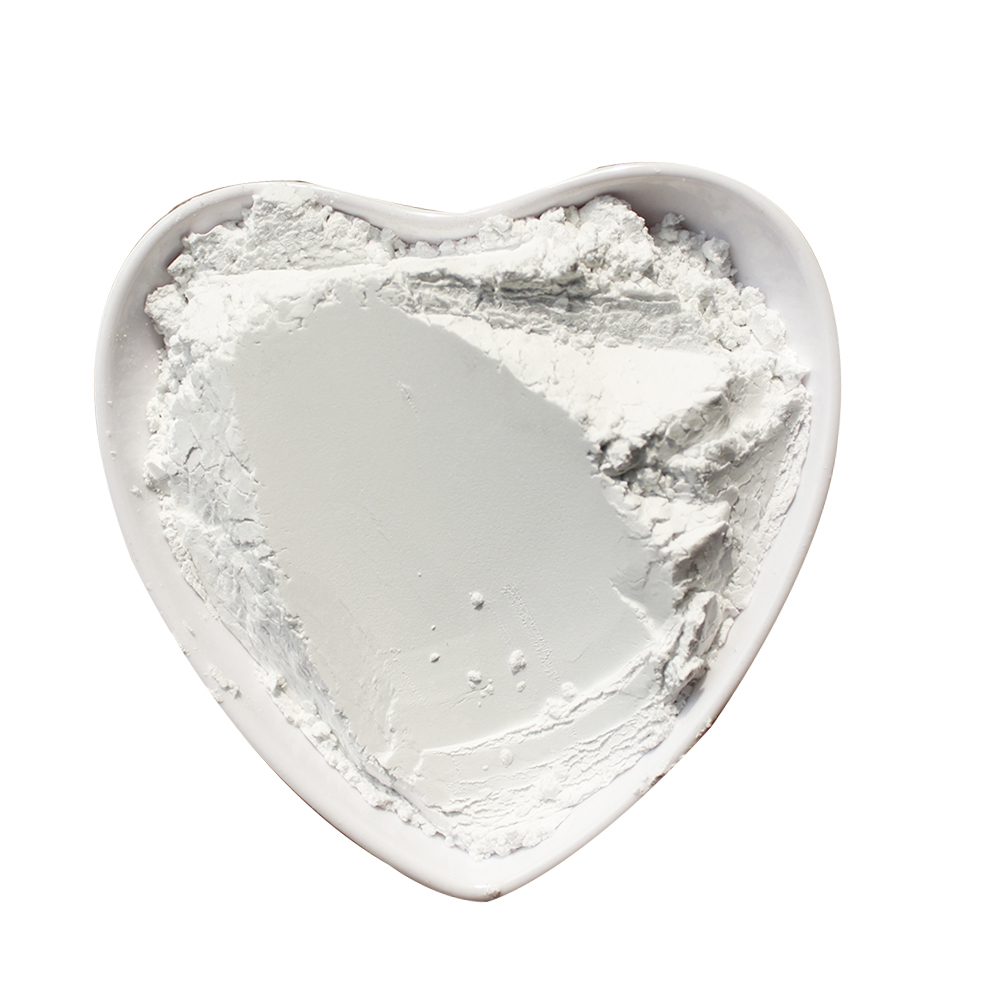
Polylactic acid is a high molecular polymer obtained from renewable resources through extraction, chemical polymerization and other processes. It has biodegradability and biocompatibility. Completely decomposed into carbon dioxide and water. The use and promotion of polylactic acid can reduce the consumption of petroleum resources, and play a role in energy saving and emission reduction, which is of great significance to environmental protection.
Polylactic acid has high strength, high modulus, and good transparency and air permeability, but its crystallization rate is too slow during processing, resulting in prolonged processing cycle and poor heat resistance, which greatly limits the application fields of polylactic acid products .
At present, the most common way to improve the performance of polylactic acid is to add a nucleating agent. In actual enterprise processing applications, talc powder is the most commonly used inorganic nucleating agent for polylactic acid, which can improve the stretching, bending, etc. of polylactic acid. Mechanical properties, improve its heat resistance.
By studying the effects of different contents of talc powder on the crystallization properties and comprehensive mechanical properties of high-gloss pure polylactic acid, the results show that the crystallization peak temperature of polylactic acid increases with the increase of talc powder content, and the crystallization temperature zone continues to move to the high temperature direction, and the crystallization rate It also accelerated.
Compared with pure polylactic acid, when the mass fraction of talc powder is 10%, the comprehensive mechanical properties of polylactic acid reach the maximum, its crystallization peak temperature increases by 13.7K, the tensile strength increases from 58.6MPa to 72.0MPa, and the tensile strength at break The strain increased from 2.7% to 4.6%, the flexural strength increased from 88.9MPa to 104.0MPa, and the flexural modulus increased from 3589MPa to 4837MPa. At the same time, the addition of talcum powder will not change the polylactic acid crystal form, but will make the size of polylactic acid spherulites significantly smaller, and the crystal nucleus density will increase significantly.
Performance Characterization of Powder--Particle Size and Distribution
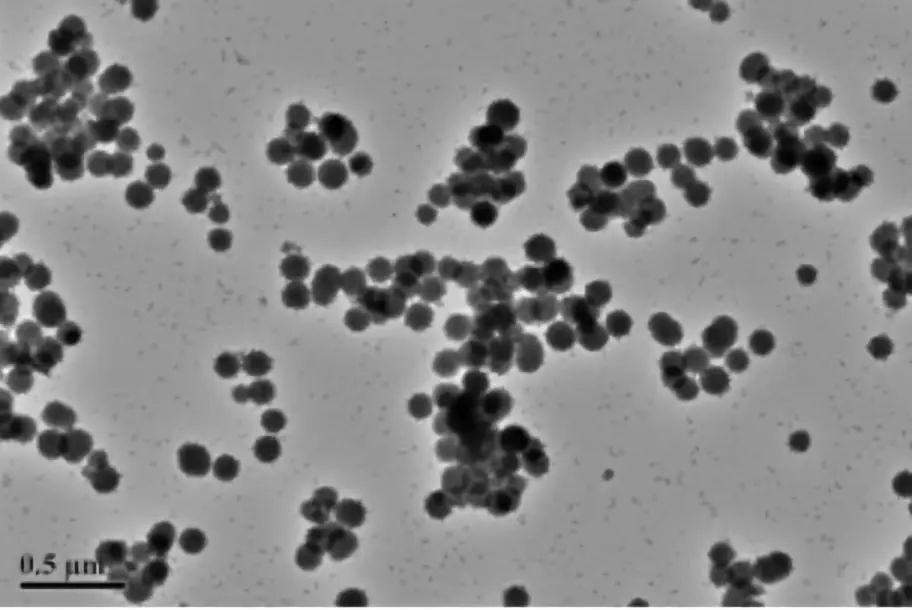
The characterization of powder mainly includes particle size and distribution, specific surface area, aggregate characterization, microscope structure analysis, component analysis, surface analysis, static characterization, surface wettability characterization and surface adsorption type, coating amount and coating Representation of coverage, etc. This issue briefly introduces the particle size and distribution of powder.
Powder is an aggregate of a large number of solid particles, which represents a state of existence of matter, which is neither different from gas, liquid, nor completely different from solid. Micropowder or ultrafine powder is generally a multi-particle aggregate with a particle size in the range of 100nm-10μm.
Composition characteristics of ultrafine powder:
1) Primary particles: Under the ordinary electron microscope, the magnification is increased, and only a single particle with a clear outline can be seen.
2) Secondary or high-order particles: multiple primary particles (solid or loose) aggregates (aggregates)
Particle Size (Particle Size) and Particle Size (Particle Size) Distribution
Particle diameter: Particle diameter or particle size—expressed in mm, μm, nm.
Spherical particles: the diameter of the particle is the particle diameter
Non-spherical particles: the equivalent diameter is the particle size (the particle size is when a certain physical characteristic or physical behavior of the measured particle is the closest to a homogeneous sphere (or combination) of a certain diameter, the diameter of the sphere (or combination) ) as the equivalent particle size (or particle size distribution) of the measured particles)
Preparation Technology of Clay Mineral-Metal Composite Bactericidal Material
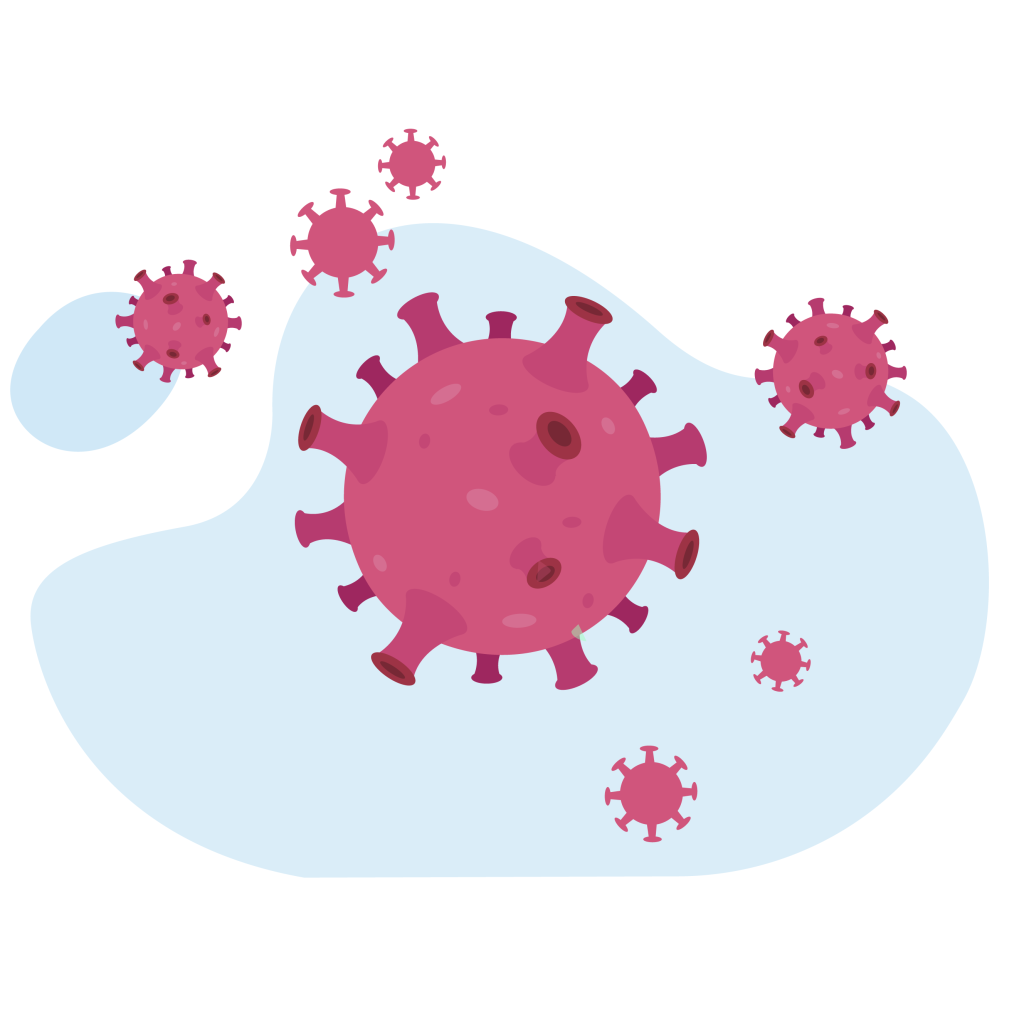
In the new bactericidal materials prepared based on clay minerals, clay minerals themselves are mainly used as carriers for bactericidal substances (such as metals, metal oxides, organic substances), and their bactericidal ability is still limited. Modified clay minerals prepared by various methods, and composites made of clay minerals and other materials can be used as new bactericidal materials to produce bactericidal effects on various bacteria.
Clay minerals can enhance the bactericidal ability through various modification methods (including thermal modification, acid modification, inorganic modification of metals or metal oxides, organic modification and composite modification, etc.). The surface area increases, the porosity and dispersion of minerals increase, and the overall thermal stability and mechanical strength of the material are improved. The clay minerals used to modify and prepare bactericidal materials are mainly montmorillonite, kaolinite, halloysite, and vermiculite, among which montmorillonite has outstanding cation exchange capacity, large interlayer domain, specific surface area and strong It is widely used because of its adsorption capacity.
Toxic metal ions and metal oxides can be inserted into the clay mineral layer or adsorbed on its surface to prepare a composite bactericidal material. The metal ions used in the research mainly include zinc, copper, and silver (among which silver is widely used), and the metal oxides include titanium oxide, zinc oxide, copper oxide, and ferrous oxide. Clay minerals and metals or metal oxides are mainly modified through interlayer cation exchange or mineral surface adsorption. The bactericidal mechanism of this type of composite bactericidal material is related to the toxicity of metals to cells or the free radicals generated.
Clay minerals loaded with metal ions have the advantages of slow release of metals, prolonging the sterilization time, and improving the stability of sterilization materials. The slow release of metals is related to the bonding ability between hydroxyl groups on the surface of clay minerals and metals. The increased specific surface area and porosity of clay minerals help to disperse nano-metal particles, improve the contact efficiency between nano-metals and bacteria, and improve the bactericidal effect. However, considering the toxicity of metal nanoparticles, their biological toxicity needs to be considered in specific applications. However, due to the slow release of metal ions in clay minerals, metals may continue to accumulate in the body and exhibit toxicity over time.
High value-added utilization of micro-silica fume

Micro-silica fume is the dust formed by Si and SiO gas generated during the production of ferrosilicon alloy and metal silicon in the submerged arc furnace, which is oxidized with air in the flue and condensed rapidly, also known as silica fume (or condensed silica fume). With the strengthening of environmental protection, the output of micro-silicon fume is increasing year by year. If it is directly discharged or dumped, it will cause environmental pollution and waste of resources. Therefore, how to resource and utilize these huge quantities of micro-silicon fume has become an urgent problem for ferrosilicon smelting enterprises. The problem.
Microsilica fume is a by-product of ferrosilicon and metal silicon smelting. It is widely used in metallurgical pellets, special concrete, special cement, refractory materials, chemical products and other fields due to its excellent and magical properties.
1. Characteristics of silica fume
The main chemical composition of micro-silica fume is SiO2, in which SiO2 mainly exists in non-crystalline phase (or amorphous SiO2), with a content of ≥80%, less impurity components, a specific surface area of 20-28㎡/g, and a particle size of less than 10μm Accounting for more than 80%, it has high chemical activity, is easy to react with alkali, and has the characteristics of light weight, high refractoriness and strong activity. It is widely used in construction, refractory materials, metallurgy, ceramics, chemical industry and other fields.
2. The hazards of silica fume
Microsilica dust is a kind of fine, light, and easily floating inhalable particles. If it is discharged directly, it will cause the dust to be difficult to settle.
Floating in the air, seriously affecting human health and the surrounding environment. Microsilica dust particles can directly enter the lungs after being inhaled by the human body, causing lung cancer and other dust diseases.
3. High value-added utilization of micro-silica fume
Generally speaking, the higher the grade of SiO2 in silica fume, the higher its added value.
(1) Used in concrete industry
Concrete mixed with silica fume has the characteristics of high strength, good adhesion and cohesion performance, and can increase the molding thickness. In water conservancy and hydropower projects such as long-span bridges and offshore oil drilling platforms, micro-silica fume-doped concrete can improve its anti-seepage, corrosion resistance and abrasion resistance. In the process of road construction, micro-silica fume can greatly improve the early strength and wear resistance of concrete.
(2) As a cement admixture
Microsilica fume is used as a blending material for the production of special cement. The special cement mixed with silica fume can be made into dense concrete whose strength is 2~3 times that of ordinary concrete. It has good wear resistance, corrosion resistance, impermeability, insulation, frost resistance and resistance to chloride ions. blocking performance, etc.
(3) Used in the refractory industry
Micro-silica dust has excellent properties such as high refractoriness, and is widely used in the refractory industry. It is mainly used to prepare high-temperature ceramics, ladle materials, high-temperature wear-resistant materials, breathable bricks, and refractory castables.
(4) Metallurgical pellets
In the metallurgical industry, most enterprises use micro-silicon fume as a return material. Using silica and micro-silica fume mixed pellets as the raw material for electric furnace reduction and smelting of silicon can achieve normal silicon recovery rate and constant energy consumption per unit product. Wet the silica fume with water and make a pellet to form a pellet of about 4cm, which can be directly reduced and smelted in an electric furnace without roasting or drying. The pellets can also be sintered at high temperature, there are no problems such as bursting during the sintering process, and the product sintered ore has high strength.
(5) Preparation of nano-silica (nano-SiO2)
(6) Preparation of metal silicon
(7) Preparation of high performance adsorbent
(8) Preparation of gel material
Since micro-silica fume can be calcined at high temperature or alkali-dissolved to prepare water glass, no matter whether micro-silica fume or water glass is used as the silicon source to prepare silica aerogel, high value-added utilization of micro-silica fume can be realized. Silica airgel prepared from silicon fume has high porosity, high strength, low density, good heat insulation performance, and non-toxic characteristics. It is expected to be widely used in aerospace, construction, medicine and other industries.
Which non-metallic minerals can be used for thermal insulation?
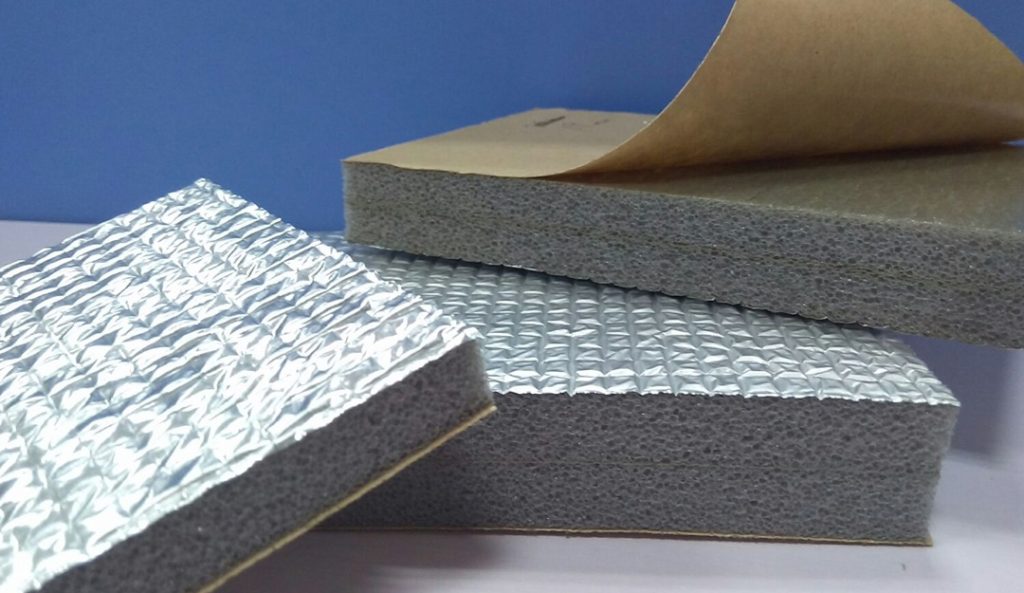
Thermal insulation materials are involved in both industrial facilities and civil buildings. Non-metallic minerals (things) or mineral materials with thermal insulation properties are an important class of inorganic thermal insulation materials, which can be widely used as thermal insulation for industrial facilities and civil buildings. To achieve the purpose of saving energy and reducing consumption and reducing carbon.
Many non-metallic minerals (materials) have excellent thermal insulation properties by themselves or after processing, and can be used as thermal insulation materials. Such as pumice (stone), porous basalt, diatomite, etc., which are light porous or honeycomb rocks, can be directly used as building wall insulation materials; and serpentine asbestos, sepiolite fiber and Fibrous minerals such as palygorskite fibers can be directly used as thermal insulation materials for industrial facilities and building walls; industrial vermiculite, perlite, shale, etc. can be prepared after high-temperature expansion treatment for expanded vermiculite, expanded perlite, Expanded shale, etc., and further processed into thermal insulation products such as insulation boards, pipes, and blocks.
Utilize serpentine asbestos, sepiolite fiber, palygorskite fiber, etc. can be made into velvet, yarn, thread, cloth, board, cotton felt, pipe, etc. and further processed into fiber insulation products or profiles; porous mineral materials For example, pumice, expanded vermiculite, expanded perlite, diatomaceous earth and gypsum are processed into porous insulation materials or profiles; foamed asbestos, expanded gypsum, expanded perlite and expanded vermiculite can be prepared through foaming treatment Porous foam material products; asbestos-diatomite composite coatings, sepiolite-based composite silicate thermal insulation materials, expanded pearl rock wool thermal insulation mortar or coatings and other composite thermal insulation materials or products can be prepared through composite processing.
Insulation materials have common characteristics such as low thermal conductivity, small bulk density, often loose and porous, and poor hygroscopicity. The heat conduction mechanism of non-metallic minerals (things) and mineral materials is different from that of metal materials. Metallic materials mainly rely on electron movement to transfer heat, while non-metallic minerals (objects) and mineral materials are usually dielectrics, and the transmission of heat energy mainly depends on lattice vibration. Non-metallic minerals (materials) and mineral materials and products used as thermal insulation materials usually have low thermal conductivity and porous characteristics, so they often have the functions of light weight, sound insulation and sound absorption, and flame retardant and fire prevention.
For example, the small interlayer space or cavity of expanded vermiculite and expanded perlite greatly reduces the thermal conductivity and loose density, and has good thermal insulation, heat insulation, insulation, flame retardant and other properties, and its chemical properties are stable. , and has antibacterial and weather resistance properties. Therefore, expanded vermiculite and expanded perlite products can be widely used as industrial and civil thermal insulation materials, etc., and meet the requirements of high temperature resistance in industrial engineering thermal insulation and energy saving, as well as the thermal insulation and durability requirements of almost all civil building heating facilities Wait. However, most organic thermal insulation materials still have relatively large limitations in terms of price, fire prevention and durability, and it is difficult to meet relevant requirements.
The production temperature of non-metallic mineral insulation materials and products is mostly normal temperature, even the expansion processing temperature of vermiculite or perlite is lower or far lower than 1200 °C. The production temperature of other commonly used inorganic non-metallic fiber materials, such as mineral wool, glass fiber, foam glass, etc., is as high as 1200-1450 °C.
Therefore, compared with other inorganic non-metallic thermal insulation materials, the thermal insulation properties of non-metallic minerals (things) and mineral materials not only have outstanding energy-saving and consumption-reducing effects in the production and processing process, but also their thermal insulation products play an important role in industrial and civil buildings. Extensive use can greatly reduce the energy dissipation of industrial and civil facilities, thereby achieving the purpose of energy saving and carbon reduction, which is of great significance for helping carbon emission reduction and carbon peaking.
Silica Market Demand Analysis
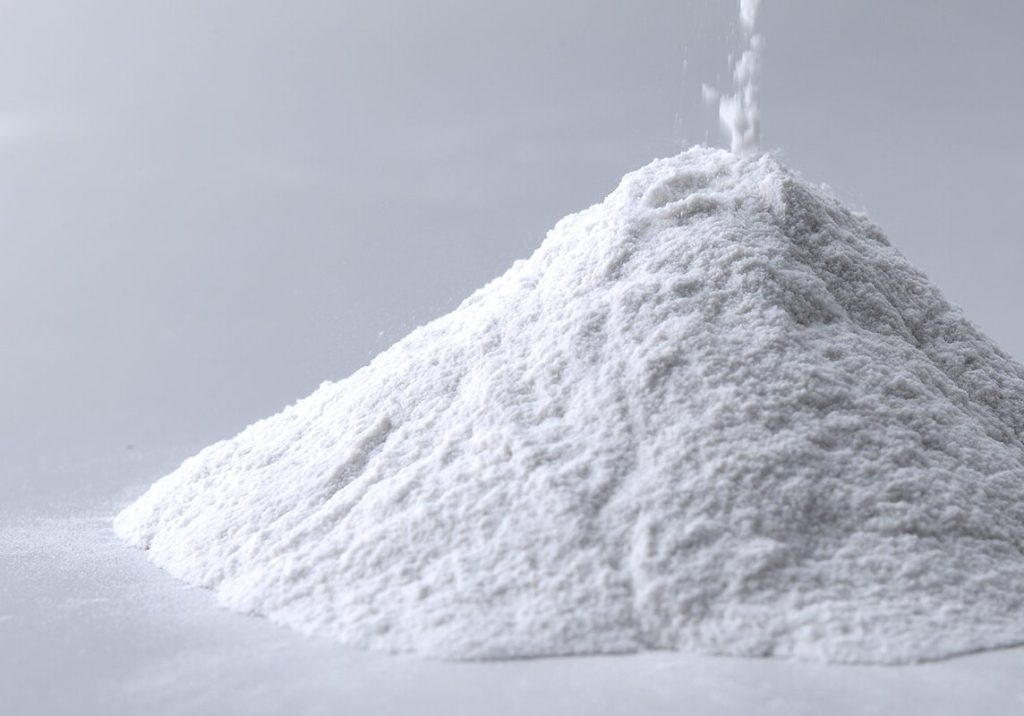
Silica has the characteristics of porosity, large specific surface area, and high chemical stability. It can be used as a reinforcing agent, adsorbent, and carrier in a wide range of fields. Among them, the precipitation method has low cost and large application volume, and is mainly used in tires, shoemaking, etc. The field of rubber industry accounts for about 70%. At present, domestic manufacturers have established layout. The high-end chemical, food, drug and cosmetics market is relatively fragmented due to large differences in product technology routes and process control.
The product cost of the precipitation method is lower and the application volume is larger
Due to the different production principles of precipitation method (liquid phase method) silica and fumed silica, there are large differences in physical and chemical properties, cost and price, and application fields, forming a completely different market structure.
Precipitation products, which account for more than 90% of the total market, have low production costs and are widely used in tires, shoemaking, coatings, toothpaste, and food in the industrial field. The price is between 3,000 and 30,000 yuan/ton between;
Accounting for about 7% of the total market, gas-phase method products have relatively high production costs, and their applications are concentrated in high-end fields such as silicone and coatings, with prices ranging from 25,000 to 100,000 yuan/ton.
(1) Structural differences such as product particle size and cost differences determine the application fields of different technical routes.
(2) The global market space for silica is about 4 million tons, and the domestic consumption exceeds one million tons
The global market space exceeds 5 billion US dollars and 4 million tons. Tires and rubber are the main application fields, and high-end manufacturing and food, drug and cosmetic fields are the main growth sources.
(3) Low-end product applications such as shoemaking and tire applications dominate, while high-end application markets are relatively scattered
The high-end silica market is about 1.5 million tons per year. From the perspective of the market size of subdivided fields, the toothpaste application field in the consumer goods/pharmaceutical field is relatively large, with a global total of about 300,000 tons, and the price is at an upper-middle level; other food, drug and cosmetic applications are relatively scattered, with a total demand of 200,000 tons Ton class. The application of rubber industry exceeds one million tons, but most of them are low-end applications with low prices. The market scale of high-end green tires, silicone rubber and other applications is growing rapidly, and the demand exceeds 300,000 tons; high-end chemical industry applications Sinochem's anti-blocking agents, battery separators, and coatings are sold at relatively high prices, totaling about 700,000 tons.
Technical points of modification of compound calcium carbonate pigment in papermaking

The compound product of calcium carbonate for papermaking usually refers to the special product for papermaking which is mainly made of calcium carbonate component (>50%) and mixed with other synthetic or natural mineral powders in a certain proportion, including PCC and GCC mixed processed products.
In terms of processing technology and application technology, any natural or synthetic mineral powder and organic synthetic pigment with high whiteness, low processing cost, and no negative impact on paper production process and paper product quality, in principle It can be used as a raw material for calcium carbonate compound products.
At present, there are more than 20 kinds of modifiers commonly used for compounding calcium carbonate pigments in papermaking. The wrong choice will have a large negative effect on the application of the paper mill, or even unusable.
The modification of calcium carbonate and its compound products can be divided into dry modification and wet modification according to different processes. Wet modification is more suitable for calcium carbonate and its compounded slurry products. The modification of PCC can be carried out before the production process is not dried, and it can also be carried out simultaneously with the carbonization process. The modification with GCC can be carried out in the wet ultra-fine grinding process or in the storage tank of the slurry product, or in the ore blender.
Based on the easy solubility of calcium carbonate under weak alkaline and acidic papermaking conditions, weak acid salts or organic polymers are used to modify calcium carbonate and its compound products, aiming to solve the production operation under acidic sizing conditions in papermaking. Difficulty and single use of calcium carbonate is prone to "fiber alkaline blackening" effect in the paper containing mechanical pulp under alkaline conditions.
The correct choice of modifier should not only consider the affinity and miscibility of the activator with calcium carbonate and its matching pigment powder, but also consider the miscibility of the auxiliaries and other chemical auxiliaries added in pulp making, especially for coatings. Compatibility effect of the modified calcium product of the system with the sizing materials and auxiliary materials of commonly used coatings.
Dry modification of coal-measure kaolin and its effect on rubber properties
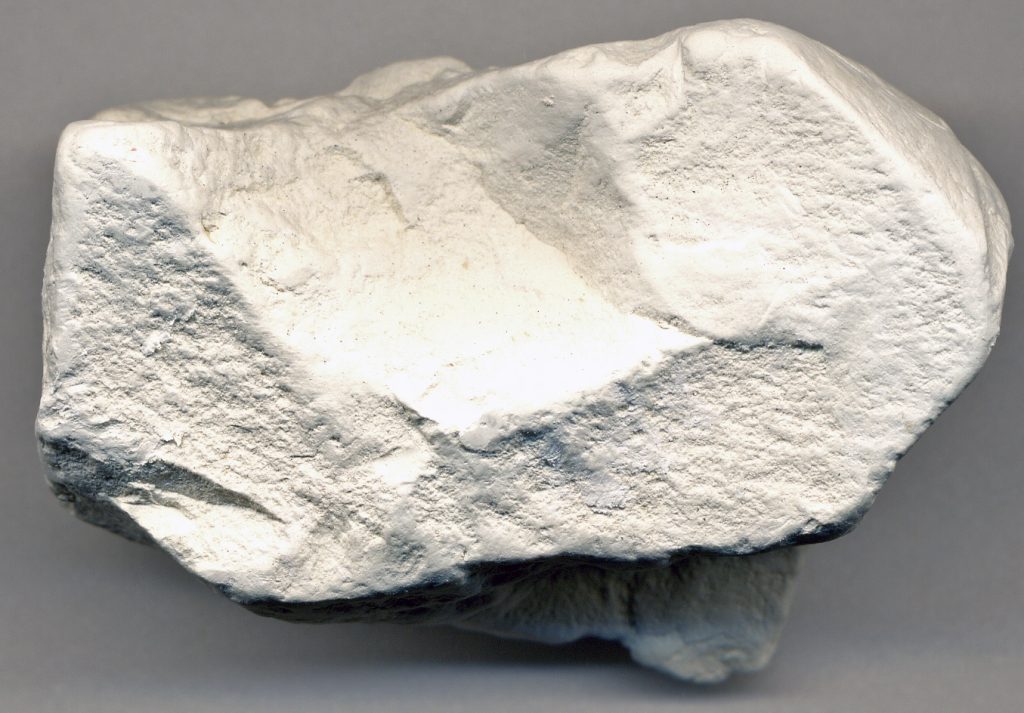
With the rapid development of the rubber industry, the traditional reinforcing fillers carbon black and silica have been unable to meet the demand, and finding cheap reinforcing fillers has become an important research topic in the industry. Among them, kaolin has become a rubber reinforcing filler with broad application prospects due to its abundant reserves, low price and outstanding reinforcing effect.
Coal measure kaolin refers to kaolinite clay rock with kaolinite as the main mineral component in coal measure strata. The score can reach above 0.97.
To make kaolin show good reinforcement effect in rubber matrix, it is very important to modify its surface. Zhang Qingbin et al. modified the surface of kaolin by high-speed shearing, crushing and stirring, in order to achieve surface organicization and good combination with the rubber matrix. At the same time, they evaluated the modification effect of kaolin. SBR) physical properties and interface bonding, the results show that:
(1) In the high-speed shearing pulverizer, the optimal modification conditions of kaolin are: the mass fraction of modifier (coupling agent KH-550) is 0.04, and the modification time is 1min.
(2) Under the optimal modification conditions, compared with the unmodified kaolin compound, the physical properties of the modified kaolin compound are significantly improved, the tensile strength is increased by 89%, the tear strength is increased by 21%, and the DIN wear amount is reduced. 18% smaller.
(3) Compared with unmodified kaolin, the compatibility of modified kaolin with rubber is improved, and it combines well with the rubber matrix, which is beneficial to transfer stress and make the rubber compound exhibit excellent physical properties.
The preparation method of vaterite calcium carbonate
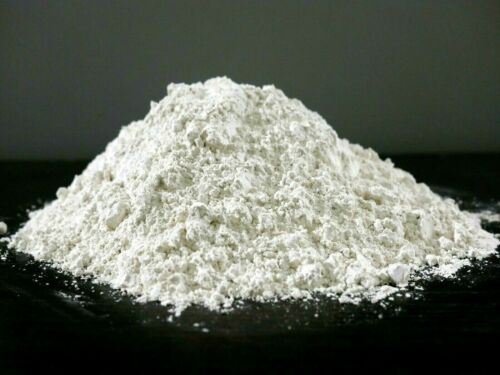
There are three common crystal forms of calcium carbonate: aragonite, vaterite, and calcite. From the perspective of thermodynamic stability, the calcite type is the most thermodynamically stable crystal form and exists widely in nature; while the vaterite type is the most unstable, in a metastable state, and only exists in some fish in nature. Otolith organs, ascidian spicules, crustacean tissues.
There are two main ways to generate vaterite calcium carbonate, namely dissolution recrystallization and solid-solid phase direct transformation. At present, it is believed that the dissolution and recrystallization route is the main way to generate vaterite-type calcium carbonate, that is, amorphous calcium carbonate is generated as the initial phase in the solution. However, the solubility of vaterite-type calcium carbonate is relatively high, and dissolution and subsequent nucleation and growth of calcite-type calcium carbonate occur. Such a process occurs continuously, making vaterite-type calcium carbonate gradually transform into calcite-type calcium carbonate.
Starting from the formation route and mechanism, high-purity vaterite-type calcium carbonate is mainly prepared by inhibiting the dissolution and recrystallization process. At present, common preparation methods can be divided into three types: carbonization method, metathesis method and thermal decomposition method according to the principles involved in the synthesis process.
1. Carbonization
The carbonization method uses an alkaline solution containing soluble calcium salts as a calcium source, and prepares vaterite-type calcium carbonate by introducing CO2 gas into the solution and controlling the process conditions. The calcium source is mainly divided into two kinds of calcium hydroxide aqueous solution and calcium chloride alkaline solution. Therefore, two major systems prepared by carbonization method are also determined: Ca(OH)2-H2O-CO2 reaction system and CaCl2-NH3·H2O -CO2 reaction system. A large number of studies have shown that both systems can produce vaterite calcium carbonate well.
However, the carbonization method has the advantages of low cost and simple process equipment, and is currently the main industrial production method for preparing various types of calcium carbonate products at home and abroad. At the same time, researchers at home and abroad have increased the mass transfer rate and dispersion of CO2 gas in the solution by using devices such as gas dispersers, and improved the efficiency and yield of vaterite-type calcium carbonate. Therefore, vaterite-type carbonic acid is prepared by carbonization. Calcium has great application prospects.
2. Double decomposition method
The double decomposition method refers to mixing the calcium salt solution and the carbonate solution under certain conditions to generate a double decomposition reaction, and at the same time adding a crystal form regulator and controlling the reaction temperature, concentration and other factors to control the preparation of vaterite calcium carbonate. In general, during preparation, one solution can be quickly mixed into another solution for the reaction, or one solution can be introduced into the other solution by controlling the addition rate for the reaction, and stirring is required at the same time. Promote the metathesis reaction.
3. Thermal decomposition method
Thermal decomposition method is a new method for preparing vaterite calcium carbonate, mainly refers to the preparation of vaterite calcium carbonate by thermal decomposition of calcium bicarbonate and controlling conditions. Usually, the purpose of preparing vaterite-type calcium carbonate is achieved by controlling the decomposition temperature, decomposition time, stirring mode and additives by using a saturated aqueous solution of calcium bicarbonate.
The preparation principle of the thermal decomposition method is simple, the process is short, and the equipment requirements are low, but the purity of the product vaterite calcium carbonate is low, the decomposition time is long, and the decomposition reaction is difficult to control; at the same time, the temperature required in the production process is high and energy consumption is high. large and difficult to apply in practice. There are few domestic and foreign studies on this method, and a lot of work still needs to be done in theory and practice.



